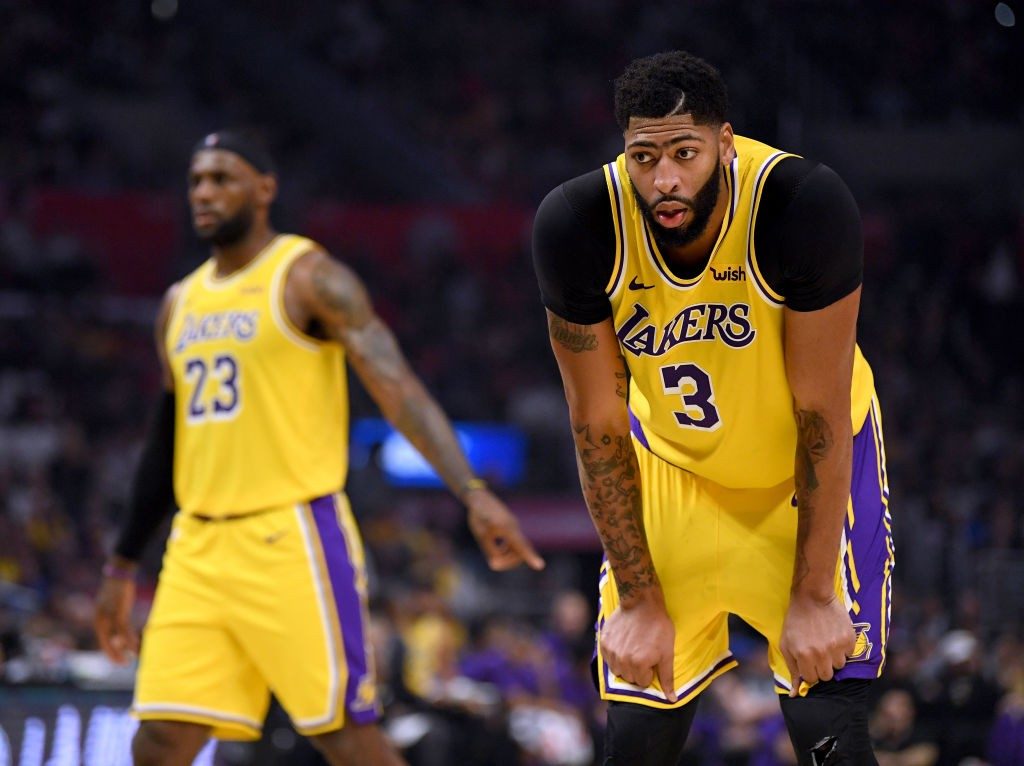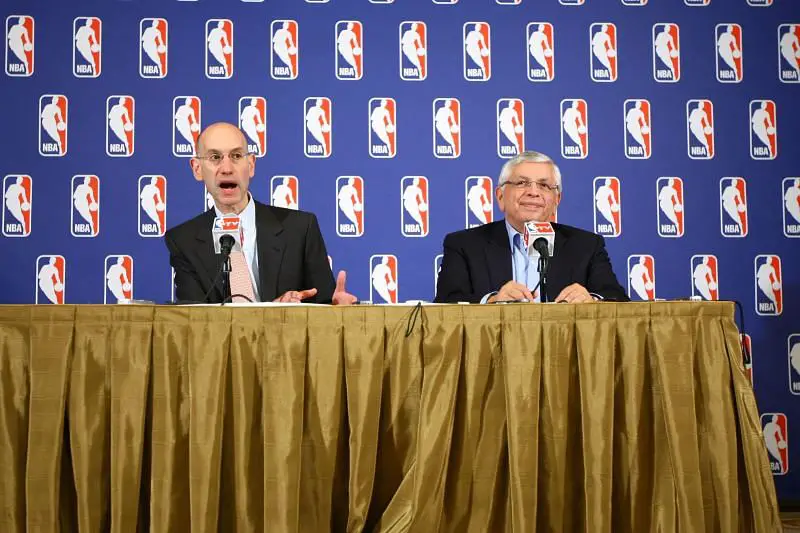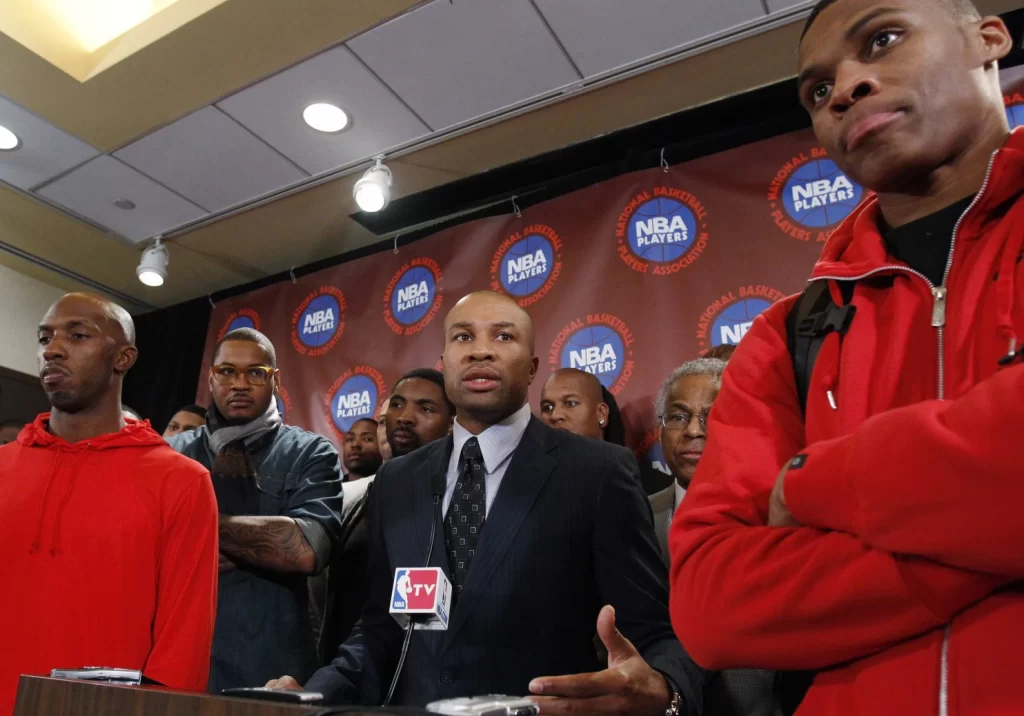Let us know more about the 2011 NBA Lockout in detail
NBA is one of the most popular sports leagues in the whole world. The games that happen in the league are like Holy Grail for basketball fans all over the world.
Every other night, high octane basketball games take place in the NBA and we can see thousands of fans rooting for their favorite teams or for their favorite players.
But NBA is not just about winning or losing a basketball game. Behind all the glamour and athleticism, one must remember that the primary function of the NBA is business. If the business does not sail smoothly, awful things are bound to happen.
Lockouts are one of those ‘awful’ things which is a massive headache for everyone involved in the NBA. Be it fans, athletes, managers, owners, or sponsors, everyone gets affected by a Lockout.

What is the meaning of an NBA Lockout?
In short, a Lockout in NBA means that players and team officials, including coaches, owners, staff, are not permitted to talk to their players. Nobody gets their salary and all the players’ contract temporarily expires until the new CBA (collective bargaining agreement) is signed. Ultimately, the league gets shut down and no games are played.
What was the 2011 NBA Lockout all about?
The 2011 NBA Lockout was not the first Lockout that has happened in the NBA. The 2011 Lockout was the fourth and most recent lockout in the history of the National Basketball Association (NBA).
As the 2005 collective bargaining agreement (CBA) expired, the team owners stopped doing their work. The 2011 Lockout lasted 161 days, beginning on July 1, 2011, and ending on December 8, 2011.
During the lockout, teams could not trade, sign, or contact players. Also, players could not access NBA team facilities, trainers, or staff.
Moreover, the start of the NBA 2011–12 regular season got delayed and instead of November, the season began in December. Also, the number of regular-season games was reduced to 66 games than the normal 82 games.

What are the causes of the 2011 NBA Lockout?
There were several issues that triggered the 2011 NBA Lockout. Let’s take a comprehensive look at them.
First problem: Capital Loss
22 out of the 30 NBA teams were losing money. Before 2011, over the past two years, NBA as a whole lost a massive amount of money. Due to the continuous losses, the salary cap dropped and teams had less money for players, coaches, and other important things.
Hence, the NBA needed to re-evaluate its business model, to try and appeal to more people, so that the league can make a significant profit.
Second problem: Small teams vs. Big teams
Large teams like LA Lakers, Miami Heat, Chicago Bulls, etc. dominated the league as they had more money. They have huge fan bases, thus generating a large market, which enabled them to go over the luxury tax to acquire players. Big teams mostly signed or traded for the best players, based on where these players wanted to play.
On the other hand, small teams like Charlotte Hornets or Minnesota Timberwolves were forced to move because there is no large fan base, and hence, the teams couldn’t make much money out of the small market. Also, less money means no signing or trading of big players.
To resolve this inequality between the teams, the only solution was to have a level playing field. It could be achieved only by condensing the number of teams in the league.

Third problem: Trades
The 2005 CBA maintained that with every trade, the players’ salaries involved in the trade must be within 25% of each other, unless the team can afford to take the contract without going over the soft cap.
This absurd rule was hurting the trades as every trade seemed like a salary dump. Secondly, every contract went over the cap. In short, trades were not benefitting the teams and there was a massive worry about paying huge salaries.
The new CBA aimed to change this rule, allowing teams to trade as they wish, as long as they are below the hard cap. After all, the trades should make sense and help build a contending team.
Fourth problem: Contracts
NBA contracts at that time had major problems in them. The biggest problem was that every contract in the NBA was guaranteed.
The guaranteed contracts significantly hurt teams. This was because when the players signed guaranteed contracts, they received the money in full amount, no matter what. Even if they didn’t play, were injured, or got cut. Thus, guaranteed contracts were a complete loss for the teams as they hampered team-building.
The new CBA was looking to eliminate guaranteed contracts, and also reduce the number of years on contracts. In other words, NBA was looking to shift to an NFL-esque contract situation with small-cap hits to cut players.
Fifth problem: Other Smaller Issues
The NBA, at that time, had a few player misconducts, which were not defined under the 2005 CBA. Thus, the new CBA aimed to define certain player violations and what were the appropriate punishments for committing these player violations.
Additionally, players complained about the minimum draft age, but it likely didn’t change.
Chronology of the 2011 NBA Lockout
July 1, 2011: The lockout begins.
September 23, 2011: The NBA cancels training camp, which was to begin October 3, and the first week of preseason games, which were from October 9 to 15.
October 4, 2011: The NBA cancels the remainder of the preseason.
October 10, 2011: The first two weeks of the regular season canceled.
October 18, 2011: All games through November 30 canceled.
November 14, 2011: The NBPA dissolves labor union into a trade association.
November 15, 2011: The NBA cancels all games through December 15. Players filed antitrust lawsuits against the NBA in Chicago and New Mexico federal courts.
November 26, 2011: The NBA owners and players reached a tentative agreement to end the lockout.
December 1, 2011: The NBPA re-formed as a union.
December 8, 2011: The new CBA is ratified, officially ending the lockout.
December 25, 2011: NBA season begins.
Bonus: All the other NBA Lockouts
- The 1995 NBA lockout; lasted for three months before the 1995–96 season.
- The 1996 NBA lockout; lasted for a couple of hours before the 1996–97 season.
- The 1998–99 NBA lockout; lasted for more than six months and forced the 1998–99 season to be shortened to 50 regular season games.
More NBA Articles:
- The 5 best Nike shoes from Kyrie Irving and their prices
- Ric Flair takes shot at Michael Jordan after teasing new Adidas Damian Lillard shoes
- Alexander Zverev backs major decision taken by Brooklyn Nets
Follow our dedicated NBA page for more NBA articles and news updates
